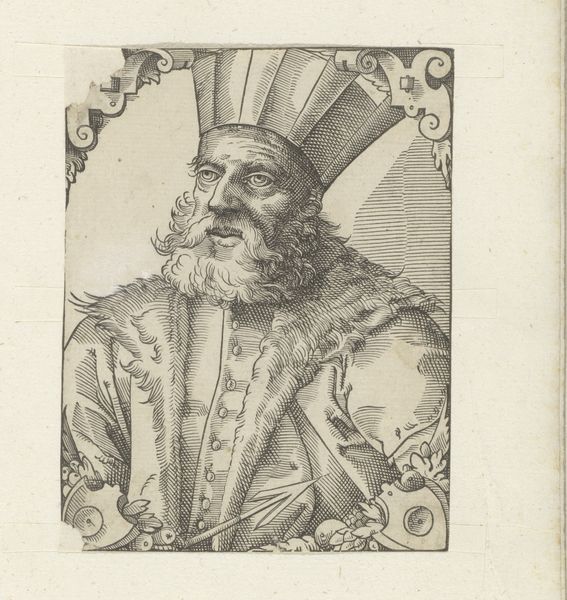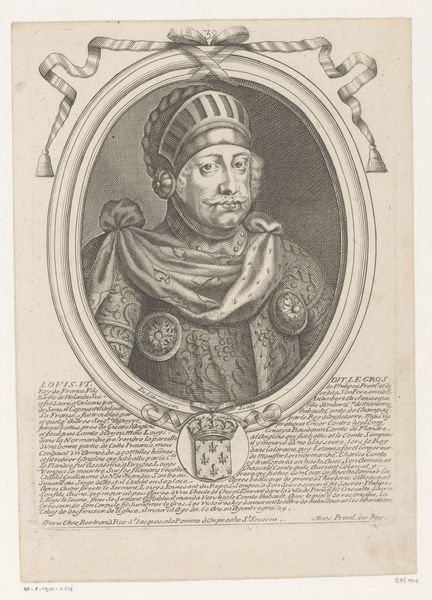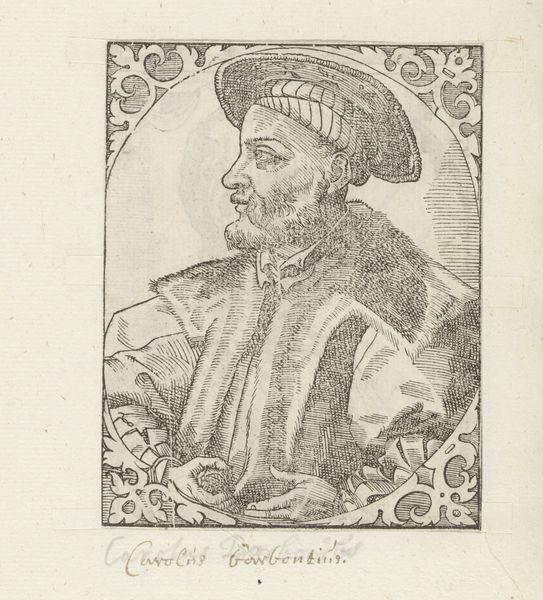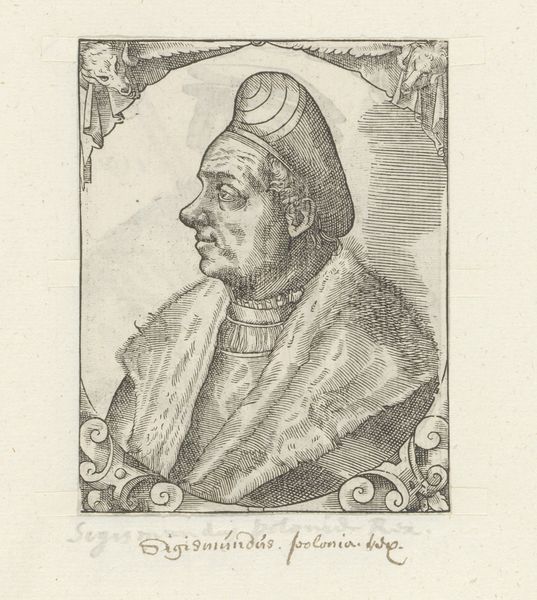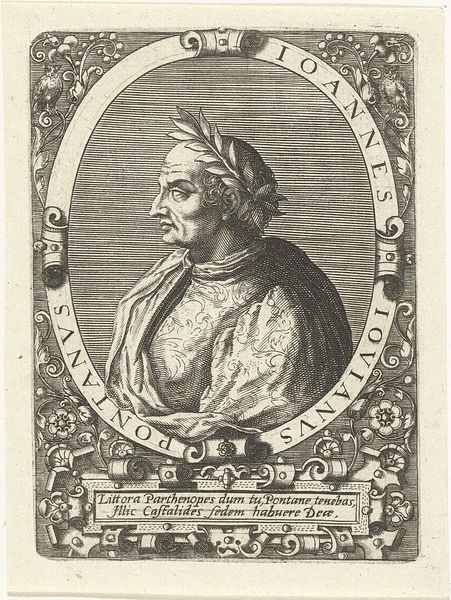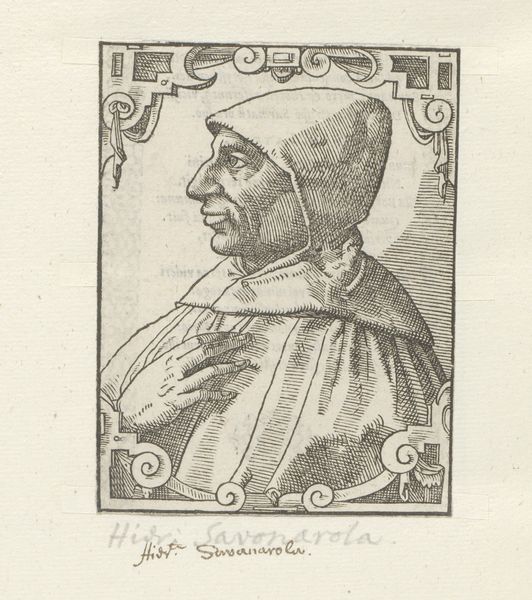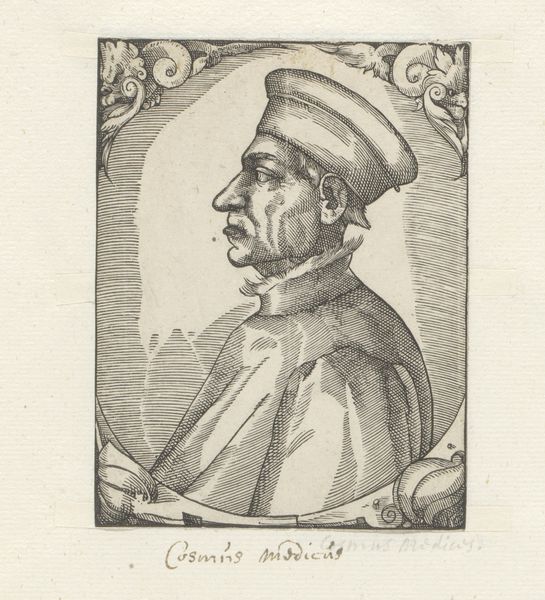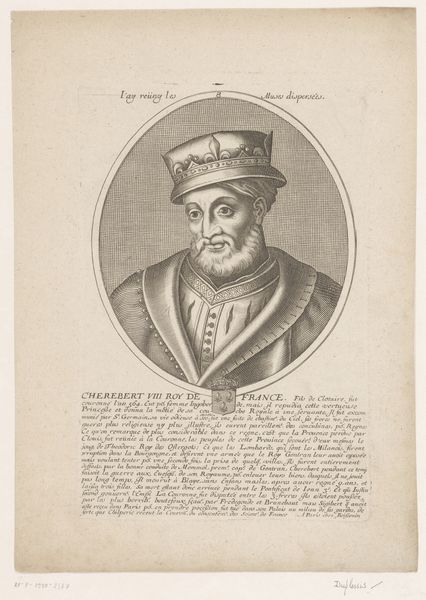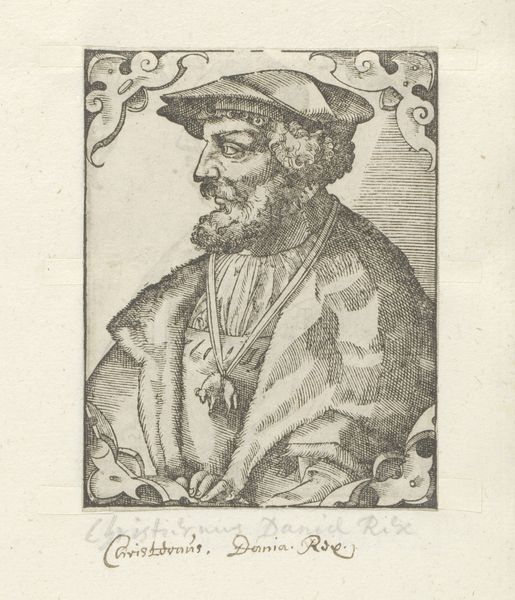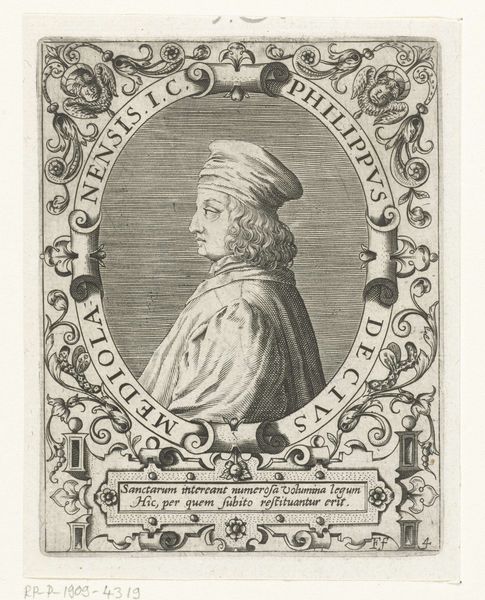
engraving
#
portrait
#
old engraving style
#
mannerism
#
history-painting
#
engraving
Dimensions: height 110 mm, width 82 mm
Copyright: Rijks Museum: Open Domain
Curator: Here we have an engraving titled "Portret van Francesco Bussone da Carmagnola". It was created between 1549 and 1575. Editor: It has a severe formality. That’s my first impression; there’s something so austere about the rendering in black and white, as if stripped of all unnecessary frills. The subject’s gaze is… direct, but not inviting. Curator: Indeed. The severe tone resonates well with the Mannerist style. Notice how the engraver used fine, parallel lines to create a sense of volume and texture? Look at the subject's hat, how the light catches those folds; each meticulously carved line contributes to the overall illusion. Editor: It’s impressive technically, but who exactly was Carmagnola, and why immortalize him this way? This image speaks less of beauty and more of power, or at least, the desire to project an image of authority. Curator: Francesco Bussone, known as Carmagnola, was a prominent condottiero, a military leader, during the early 15th century. His life was filled with political intrigue; serving both Venice and Milan, and ultimately being executed for treason. Editor: So the portrait itself becomes a piece of political propaganda. I'd be interested to know more about the circumstances surrounding the work's commission and intended audience. It makes you consider: who commissioned this and what did they wish to convey about Carmagnola, more than a century after his death? Curator: Precisely. One can see, from an aesthetic perspective, how the tight composition and meticulous execution reinforce a sense of controlled power, ideal for memorializing such a controversial figure. The frame is also very elaborate. Editor: Which serves to emphasize the importance of the portrait within a historical context. The way his face has been shaded— it suggests a shrewd intelligence, and perhaps a hint of ruthlessness necessary for survival in his time. But, without further context about patronage, these remain conjectures based on formalist analysis. Curator: I concur; however, by examining its formal qualities – its lines, textures, composition – we gain a new understanding of its social and historical implications, allowing us to look past mere representation and consider underlying intentions. Editor: Absolutely. It makes you contemplate the layers that can construct historical narratives. This engraving isn't just an image; it is an embodiment of sociopolitical ambition.
Comments
No comments
Be the first to comment and join the conversation on the ultimate creative platform.
